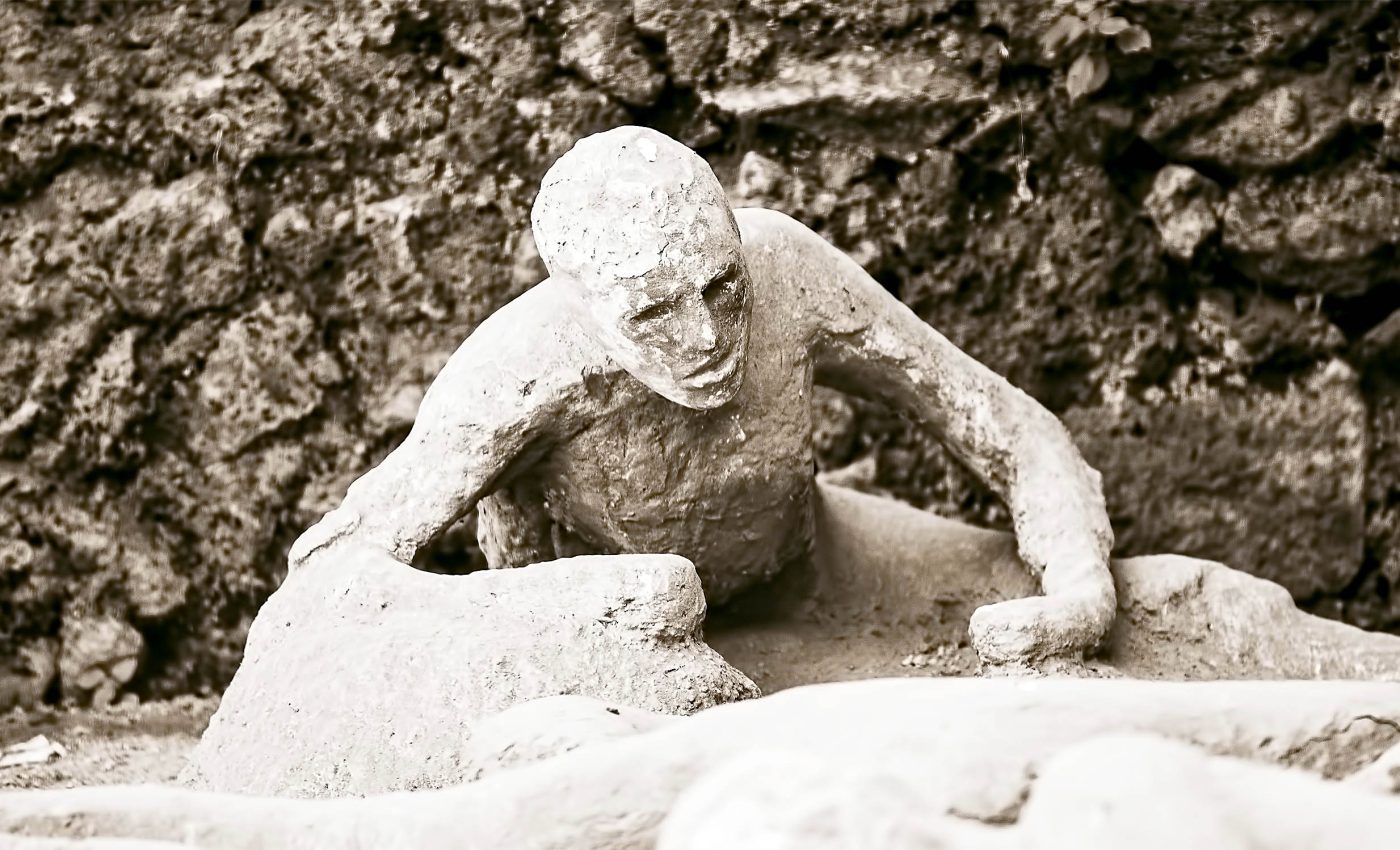
Victims of the Pompeii volcano were not who we've been told, according to DNA study
Walking through the ruins of Pompeii, it’s easy to think we already know the stories and the DNA behind the famous plaster casts of the people killed in that Mount Vesuvius volcanic eruption of A.D. 79 – who held whom, who tried to run, who stayed.
For years, guides and textbooks filled in the blanks from those poses and jewelry frozen in time, using anecdotes from imagination rather than science.
Now, however, a recent study took a different path: let the biological evidence speak.
The team sampled tiny bone fragments sealed inside several Pompeii casts and used ancient DNA and isotope chemistry to ask, and answer, basic questions:
Who were these people? How were they related? Where did their families come from? The answers challenge well-worn tales and paint a busier, more diverse city than many expect.
DNA analysis of Pompeii’s victims
When archaeologists poured liquid plaster into the hollows left by bodies, some skeletal bits stayed inside.
During restoration, researchers collected fragments – often mixed with plaster – from 14 casts. They recovered enough ancient DNA to analyze five individuals in depth.
They enriched about 1.24 million informative genomic sites, reconstructed complete or partial mitochondrial genomes, assigned Y-chromosome lineages, and checked contamination patterns to rule out modern DNA.
All five people with genome-wide data were identified as genetically male, and none were closely related up to third-degree kinship.
This approach works because ancient DNA is usually broken and scarce. Targeting a fixed panel of markers helps pull signals from the noise.
Mitochondrial and Y-lineage calls add a cross-check, and contamination tests keep the results reliable.
Rewriting the historical record
In the House of the Golden Bracelet, an adult seated with a child on the adult’s lap has long been described as a mother and child, influenced by the adult’s ornate golden bracelet.
The DNA says otherwise: the bracelet-wearing adult is genetically male, and he is not biologically related to the child.
Nearby, another adult had been interpreted as the “father” of this supposed family. However, genetic data show no evidence of relatedness among the four individuals sampled from that space.
In the House of the Cryptoporticus, two people found in an embrace were often called “sisters.” The only Pompeii victim from that pair with enough nuclear DNA for genetic sex determination turned out to be male.
Labels based on posture or accessories can mislead – especially when skeletons are incomplete and earlier restorations moved bones or added supports.
Where their families came from
The researchers compared each genome to thousands of ancient and present-day individuals.
In a principal component analysis (PCA), the Pompeii individuals shifted away from modern Italians and clustered closer to populations from the eastern Mediterranean and the Levant.
An ancestry modeling method showed the same theme: most ancestry traced to early farmers from Anatolia and the Levant.
Scientists also identified contributions from groups related to Neolithic Iran and, in one case, a steppe-derived component more typical of northern or eastern European sources.
In plain terms, these people descended largely from families with roots to the east and southeast of Italy.
That pattern matches work on Imperial-era Rome and fits a Mediterranean world linked by trade, migration, and citizenship.
Drilling deeper with isotopes
One individual from the Villa of the Mysteries carried mixed eastern Mediterranean and European ancestry.
His tooth enamel chemistry – strontium ratios and oxygen isotope values – fits the ranges typical for the central Italian coast, including Campania.
Isotopes cannot point to a street address, but, combined with DNA, they suggest a person raised locally whose grandparents or great-grandparents came from elsewhere.
Physical attributes from Pompeii DNA
With low-coverage data, phenotype predictions should be cautious. For the bracelet-wearing adult, genetic markers most likely point to dark skin and black hair. Others had brown eyes.
The team also checked runs of homozygosity; in the one genome where this was possible, they found only a short run, consistent with a large, mixed population rather than close-kin marriages.
Why Pompeii DNA matters
Bracelet does not equal “woman.” Proximity does not equal “family.” A tender pose does not prove a blood relationship.
Many of the victims’ plaster casts do not hold complete skeletons, and bones were sometimes repositioned.
Genetics and chemistry help replace guesswork with evidence. Pompeii’s residents were not a closed, uniform group in a modern national sense.
Archaeological lessons learned
In this fascinating study, ancient DNA capture, population-genetic modeling, and isotope geochemistry turned historical assumptions into testable claims – and many did not hold up.
“Sisters,” “father,” and “family” labels originally assigned to Pompeii’s victims, based on nothing more than the physical appearance and placement of those famous plaster molds, are now replaced with proper descriptions derived from hard science data.
The full study was published in the journal Current Biology.
—–
Like what you read? Subscribe to our newsletter for engaging articles, exclusive content, and the latest updates.
Check us out on EarthSnap, a free app brought to you by Eric Ralls and Earth.com.
—–













